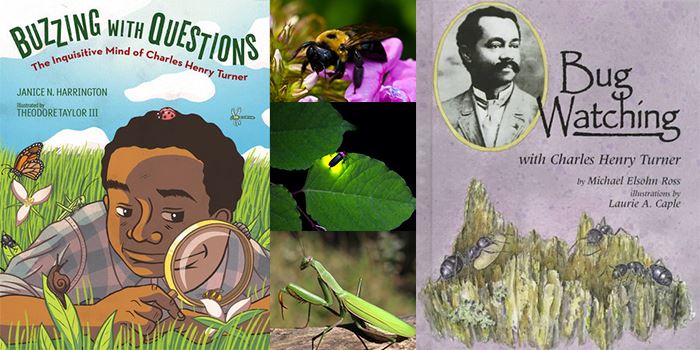Black History Month: Honoring Black Entomologists

Honoring Black Entomologists
In honor of their amazing and important scientific discoveries and related work that has contributed to the world’s collective knowledge base in regard to insects, nature, and the environment, Metroparks is spotlighting exceptional black scientists through informational blog entries this February.
- Charles Henry Turner, (1867-1923), was a scholar and scientist who wrote his thesis on the anatomy of bird brains, however, is best known for his studies on the behavior of ants and bees, determining that honeybees can recognize patterns and see color. Turner also determined that insects could hear, learn, and alter their behavior. He is also acclaimed for his discoveries and naming of many different species of rotifers (near microscopic animals) and aquatic crustaceans. In total, he published over 70 papers in his career. Some children’s books that explore his passion for insects include: Buzzing with Questions by Janice Harrington and Bug Watching by Michael Ross.
- Margaret Collins, (1922-1996), also known as “The Termite Lady,” spent much of her life passionately researching these animals. When she was young, she would explore her yard to collect insect species for study. Graduating high school at age 14 with a great interest in zoology, Margaret went on to become the first black female entomologist to earn a doctoral degree in the U.S. She spent her career teaching, participating in field work around the world, publishing over 40 papers, and became a senior research associate at the Smithsonian Institute, curating termites. The termite species, Parvitermes collinsae, was named for Dr. Collins. Her dissertation, “Differences in Toleration of Drying among Species of Termites,” is highly regarded in the field of entomology.
- Sophie Lutterlough, (1910-2009), worked at the Smithsonian Institute for 40 years, researching, restoring and preserving hundreds of thousands of species of ticks, mites and centipedes. She spent much time there properly saving animal specimens for long-term curation of important museum collections. Soon becoming an expert, she identified and co-described over 40 species with a mite, Pymephorus lutterloughae, being named in her honor. Her diligence and effort put forth in this field of study contributed greatly to the ongoing research related to tick-borne illnesses.
- Ernest James Harris (1928-2018), earned his Master’s degree studying weevils and then went on to take a job with the U.S Department of Agriculture. There, his work focused on controlling pest fruit flies that damaged exported foreign fruit. He eventually completed his PhD in Entomology, focusing on the control of the Medfly, an invasive fruit fly that can inflict much damage on fruit crops. By establishing a strain of special parasitoid wasps, known as the “Harris strain” he was able to control the eggs of the invasive flies. Dr. Harris has published over 100 papers in his lifetime.
Resources: https://entomology.wisc.edu/2021/03/02/celebrating-black-entomologists/